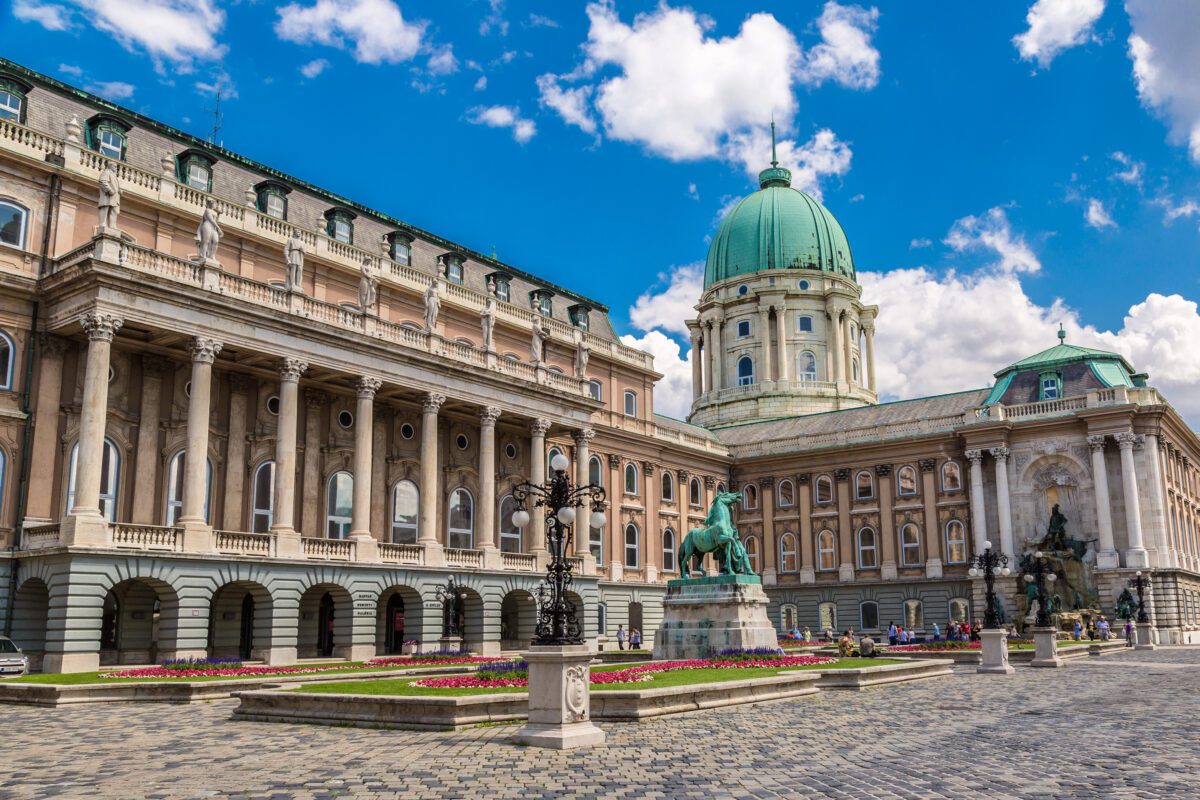Enormous reserves of warm spring water lie beneath Budapest, providing rivers of soothing thermal comfort to the city’s bath houses, therapeutic spas and evening swim parties. The stuff contains minerals and is supposedly so good for you, the Romans would drink it. Hippos at the Budapest Zoo insist on it in their pools.

The source of the Danube River is also a spring, but this one is 600 miles away in the Black Forest mountains of western Germany. By the time the waterway reaches Budapest, it’s a full-blown river, one-third of a mile wide and a major trade route. For centuries, the cities of Buda and Pest thrived on their respective banks until 1873 when they finally merged together politically to form Hungary’s capital, Budapest.

An eye-catching manifestation of this unification is the iron and stone Szechenyi Chain Bridge spanning the Danube. First built in the 1800s, the suspension bridge was damaged in World War II and then rebuilt using the structure’s original massive stone pillars and portal lions. Chains attached to the pillars support the 1,230-foot-long roadbed.
Stroll the bridge, oohing and aahing at views of the red dome-topped Hungarian Parliament and Buda Castle. It’s a magical scene at night when the lights of the bridge reflect off the Danube and dance with those of nearby landmarks.
Invading armies have always found Budapest a popular city to ransack. Occupying cultures have left their mark, dating back to the ninth century. You’ll find remnants of not only the Romans but also Celts, Turks, Habsburgs, German Nazis and Russians.

On one end of Castle Hill on the Buda side of the Danube, Buda Castle has been dominating the landscape since the 13th century when it housed kings. Now, its many structures exude a sense of medieval Baroque elegance. Take in impressive vistas of the city and the Danube and check out three on-site museums: the Hungarian National Gallery, the National Szechenyi Library and the Budapest Historical Museum.
A crazy maze of tunnels lurks beneath Buda Castle, at times used as a shelter, a Turkish harem, a hospital and a dungeon. Today, the tunnel walls are filled with curious exhibitions depicting life as a Hungarian prisoner. Legend has it that back in the 15th century, one of the chambers housed none other than Vlad Tepes, aka “Vlad the Impaler,” the inspiration for our old friend Dracula.
With its seven turrets, Fisherman’s Bastion on Castle Hill is a neo-Gothic stack of two massive stone terraces with a fairytale look about them and only one purpose in mind: to provide the best panoramas of town and river. Adjacent to the Bastion is the stunning Matthias Church, restored by the Bastion’s architect, Frigyes Schulek, in a complimentary style with a slender medieval profile.

Shoppers: Look for bargains on fine Hungarian linens, hand-crafted porcelain, palinka liqueur and Rubik’s Cubes (the inventor was Budapesti Erno Rubik). Regroup to refresh at one of Budapest’s quirky ruin bars, located in, well, ruins – buildings that were dilapidated and about to be torn down but are now seeing new life as Bohemian dives.
It’s a city of 1.7 million so delightful restaurants aren’t hard to find. If you like paprika, you’re in luck, so do Hungarians. Popular local dishes include chicken paprikash with dumplings, a fisherman’s soup called Halaszle (fish and paprika) and Hungarian goulash, a sort of stew made with beef, onions, tomatoes, peppers and the irreplaceable paprika.
Stay in the elegant Aria Hotel Budapest, a 2015-era boutique hotel chiseled into a 19th-century former bank building in the city’s historic center. Music is king at the Aria, from live lobby performances to playlists in every room to tiles laid out like piano keys. The rooftop bar hits just the right note after an afternoon spa session.























